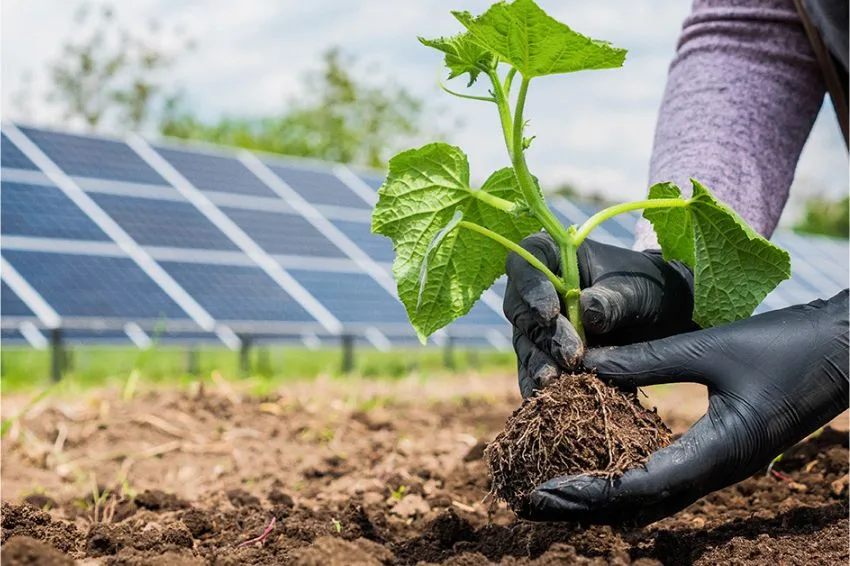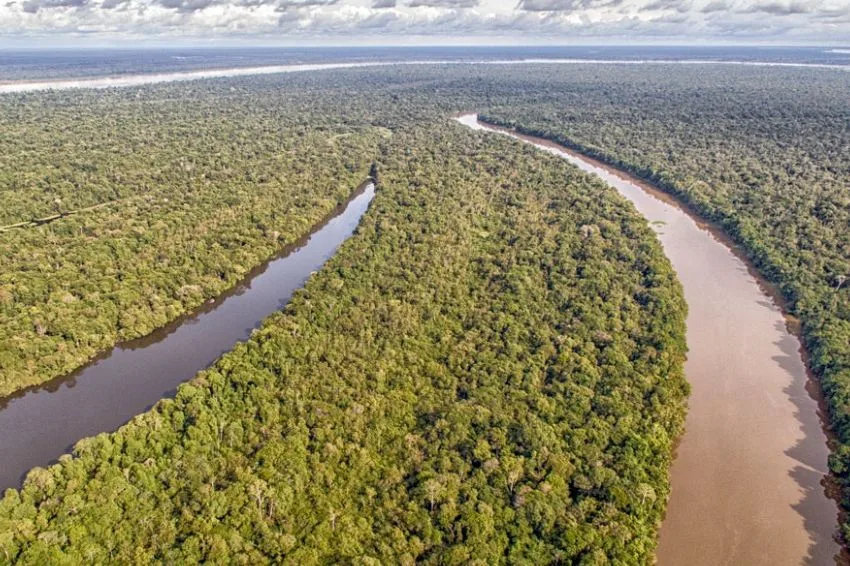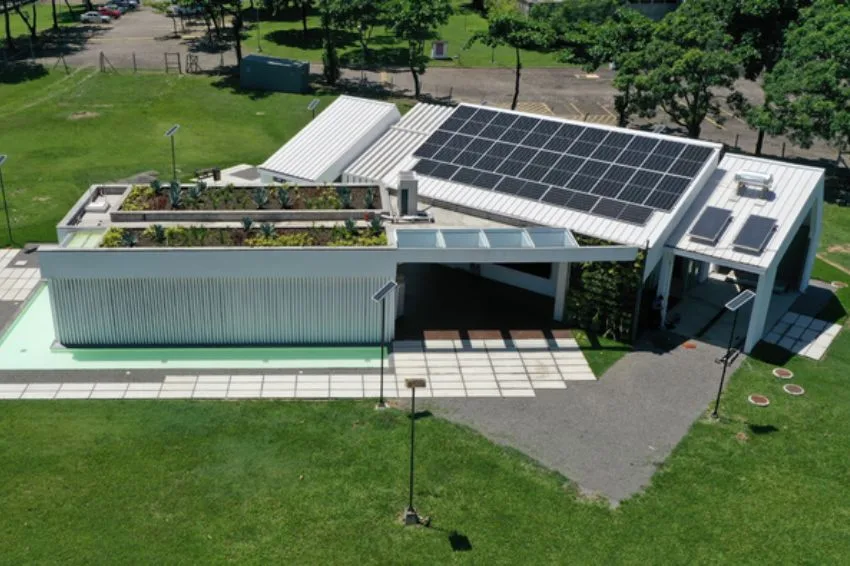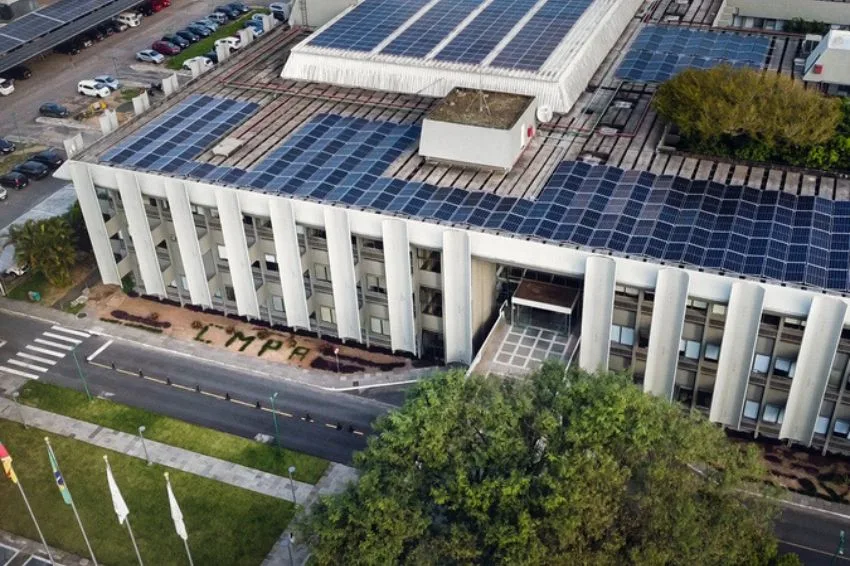A crucial element in setting the world on the right trajectory towards net-zero emissions by 2050 is tripling renewable energy capacity by 2030, starting from a baseline in 2022, reaching approximately 11 TW.
This is one of the conclusions of the new BNEF (BloombergNEF) report, entitled “Tripling renewable energy in the world by 2030: difficult, fast and achievable”. While solar can significantly contribute to this goal, relying solely on it would not be enough to generate the necessary amount of clean energy.
According to the study, diversification of the portfolio of renewable sources proves to be more effective in decarbonizing the global energy mix due to the complementary generation profiles between these sources.
The goal of tripling renewable capacity will be at the center of discussions at the next United Nations climate conference – COP 28, scheduled to be held between November 20th and December 12th in Dubai, in the United Arab Emirates.
International leaders will seek an agreement to achieve this goal. The proposed commitment corresponds to what is needed to achieve the path to zero net carbon emissions (net-zero) by 2050 and is in line with BloomblergNEF assessments.
“By comparing this target with BNEF's long-term scenarios, we find that a tripling of global renewable energy capacity is consistent with a path to global net zero by 2050, and that this increase in renewable energy contributes a robust 62% of reduction total emissions by 2030”, says the report.
Tripling renewable capacity will require a significant acceleration of investments. The last time this feat was achieved it took 12 years (2010 to 2022) and the next tripling will take eight years. The world had 3.6 TW of renewable energy capacity at the end of 2022, including wind, solar, large- and small-scale hydropower, geothermal, biomass, and marine/tidal power.
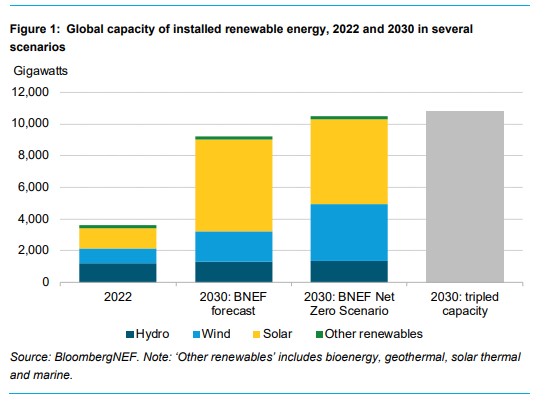
To achieve this goal, according to BENF, it will be necessary to double the rate of renewable energy investments to an average of US$ 1.17 trillion per year between 2023 and 2030, against US$ 564 billion in 2022.
It will also require investments in the power grid to increase to US$777 billion in 2030, three times more than was spent on grids in 2022. Furthermore, the world will need to deploy 720 GW of battery storage capacity by 2030, which represents 16.1 times the total deployed in 2022.
Another important aspect highlighted by the report is that contributions will be different for each region. For regions like China, the US and Europe, tripling is the right goal. Other markets, especially those with a smaller renewable base and high levels of growth, such as South and Southeast Asia, the Middle East and Africa, will need to more than triple capacity by 2030.
“Other markets, such as Brazil, already have the majority of their energy coming from renewable or low-carbon sources. Their contributions to a global tripling may be smaller, while they focus more on the decarbonization of industry, buildings, transport and agriculture, as well as the last 10-30% of electricity sector emissions that still depend on fossil production ”, points out the study.
Click here to read the full report in English.




